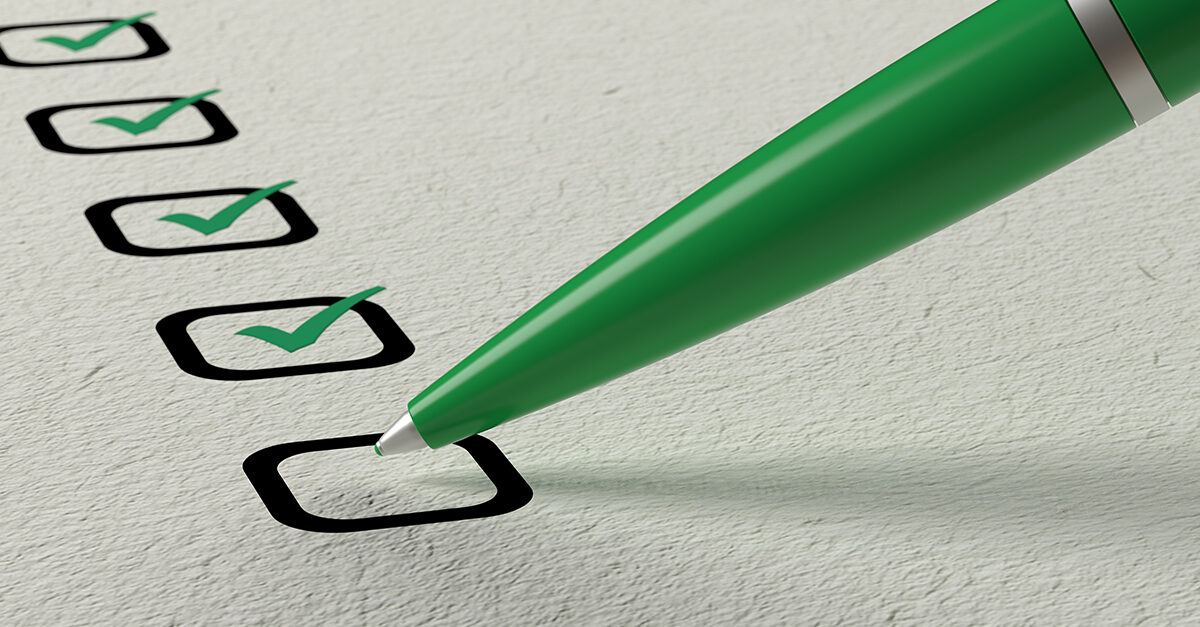Complex systems need handling with care, knowledge—and checklists.
According to an aerospace engineer, a passenger jet may have 500,000 parts, a jumbo jet up to 7 million; and as both are marvels of complexity, airline pilots use multiple checklists to help ensure airworthiness, safe flights, and happy landings.
In medicine, a study of 41,000 trauma patients in Pennsylvania found that they had 1,224 different injury-related diagnoses in 32,261 unique combinations. “That’s like having 32,261 kinds of airplane to land,” said Atul Gawande, surgeon, health researcher, and author of The Checklist Manifesto.
Gawande said flight checklists became standard practice after the 1935 crash of a Boeing B-17 on its demo flight for the United States Army Air Corps, when the “flying fortress” climbed to 300 feet, stalled, turned, crashed, and exploded in a fiery blast, killing the seasoned pilot and another crew member. The cause? Pilot error.
While the B-17 could fly faster and nearly twice as far as other aircraft and carry five times more bombs—it was more complex. After pilots began using preflight checklists, the Army’s 13,000 B-17s flew millions of miles without an accident, enabling a decisive air advantage over Nazi Germany in World War II.
Like pilots, cleaning professionals follow a checklist. We can look at is as our green cleaning mission to help prevent the Earth’s complex ecosystem—consisting of 8.7 million species of plants and animals—from “crashing,” or to put it differently, to keep the “patient” from dying.
What goes into a green cleaning checklist?
In my consulting practice, we teach these six steps to green cleaning:
- Identify the soil
- Pick up the soil
- Package the soil (contain and remove)
- Dispose of the soil (waste management)
- Inspect your work
- Measure your results (e.g., using an adenosine triphosphate (ATP) meter)
Checklists help ensure workers follow the right steps so none are missed. The six steps provide an “aerial view” of major goals, while task- or sub-lists define specifics for frontline workers.
How long should a checklist be? According to Gawande, it cannot be lengthy. “A rule of thumb some use is to keep it to between five and nine items, which is the limit of working memory,” he said.
To aid the memory, put task lists on laminated job or task cards worn around the neck and/or attached to a cleaning cart.
Workers can mark task boxes completed using a wet-erase marker, take a photo of the completed list using a smartphone, send it to a supervisor, then remove the marks after each shift.
Checklists go into double duty
Beyond listing tasks, checklists can:
- Help schedule and itemize training for each worker
- Lay out topics to discuss with customers (e.g., dusting, vacuuming, restroom cleaning outcomes) to determine satisfaction levels
- Assign task quality ratings of 1-5 for each job done
- List steps to prevent slips and falls as well as other injuries
- Enumerate key aspects of your cleaning policy, plan, and training programs
- Outline and track improvements, safety, and savings
- Help with onboarding new workers by simplifying and standardizing procedures.
Checklists prompt a disciplined approach by management to help ensure the right things are done properly and on time by listing essentials, standardizing processes, eliminating waste, and streamlining labor.




